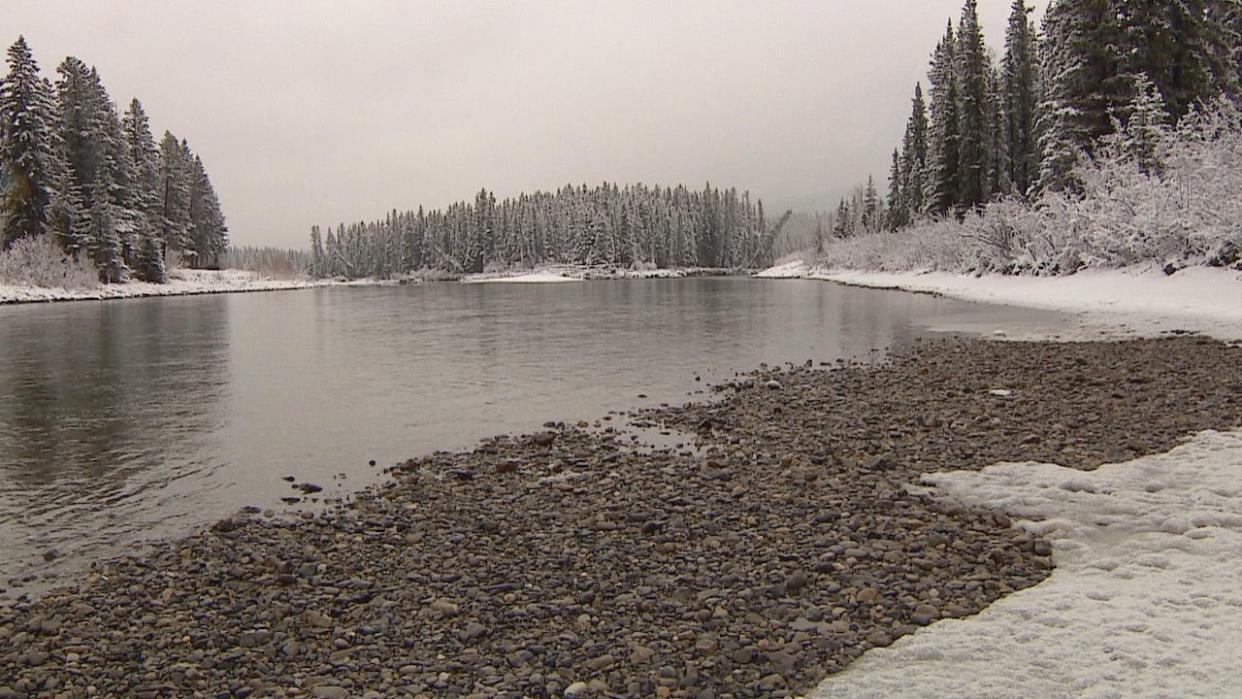Province plans ahead to mitigate severe drought this year — using a familiar modelling tool

The Alberta government is planning ahead for the possibility of a severe drought this year — using a tool and company employed in the aftermath of the 2013 floods.
The province has awarded WaterSMART Solutions, a water management consulting company, with a $350,000 contract to conduct drought modelling and determine how to optimize Alberta's water supply.
The new contract comes as the province warns there's a risk that drought conditions could worsen this year, due to low rivers and minimal snowpack. Alberta remains at stage 4 — out of five stages — of its water shortage management plan.
It's all concerning to Kim Sturgess, CEO of WaterSMART. She said Alberta's water situation has drastically changed since she created the company nearly two decades ago.
"I think that's why we've been selected, because we have this operational tool that we've developed over 15 years," said Sturgess.
The tool in question is called the South Saskatchewan River Operation Model (SSROM). It's been long used as a drought mitigation tool, but it was also utilized in the province's 2013 flood response.
Using data from the province, the tool can model various realistic river flow scenarios, predict how they would be affected with different systems in place, and in this case, help figure out the most effective ways to maximize water supply.
Resilience is a big focus for Sturgess in this work. She said creating resilient systems is critical as Alberta sees more extreme weather events.

Kim Sturgess is the CEO of WaterSMART Solutions. (Submitted by Kim Sturgess)
"We're not going to be able to make any more water, right? That's just something everybody needs to understand," said Sturgess.
"It's really us being able to build our infrastructure and our practices and systems in a way that allows us to have that flexibility to manage through these extremes, because they are going to come."
WaterSMART is required to submit a report with its findings to the province by mid-April.
Tool used after 2013 Alberta floods
Richard Phillips, general manager of the Bow River Irrigation District, has been involved with the development of the SSROM tool for over a decade.
The tool was created specifically for drought mitigation. But Phillips said it has also helped the province in other ways.
"Following the 2013 floods, the model was used extensively to determine what could be changed to help provide flood protection in the future and it was key to determining what should be done there," said Phillips.
"More recently, we've been looking at water supply, where water can be managed more effectively to ensure better water supply in times of drought such as we're now experiencing. It continues to evolve as any good model would."
Mike Murray, executive director for the Bow River Basin Council, said it's probably the best tool available right now.
"One of the things that the modelling allows you to do is to try out a few different scenarios about how people could work together and use limited resources … and what are maybe some unanticipated consequences of doing those options," said Murray.
"You [also] don't have to worry about the ecosystem being destroyed by making a wrong decision."

Mike Murray is the executive director of Bow River Basin Council. (Bow River Basin Council)
Murray said despite some recent snowfall, water levels in the Bow River are still low. He said he's hoping for a lot more precipitation in the mountains, but he won't have a better grasp on the situation until the spring.
Meanwhile, Phillips said the reservoirs that supply irrigation districts in the Bow River are very close to normal winter conditions this year — though that isn't the case for reservoir levels further south.
"It's simply a matter of everybody doing their part and being aware that water is a precious commodity…. we have been in worse situations than this before for drought and we've come through OK, and I'm sure we'll do so again."

